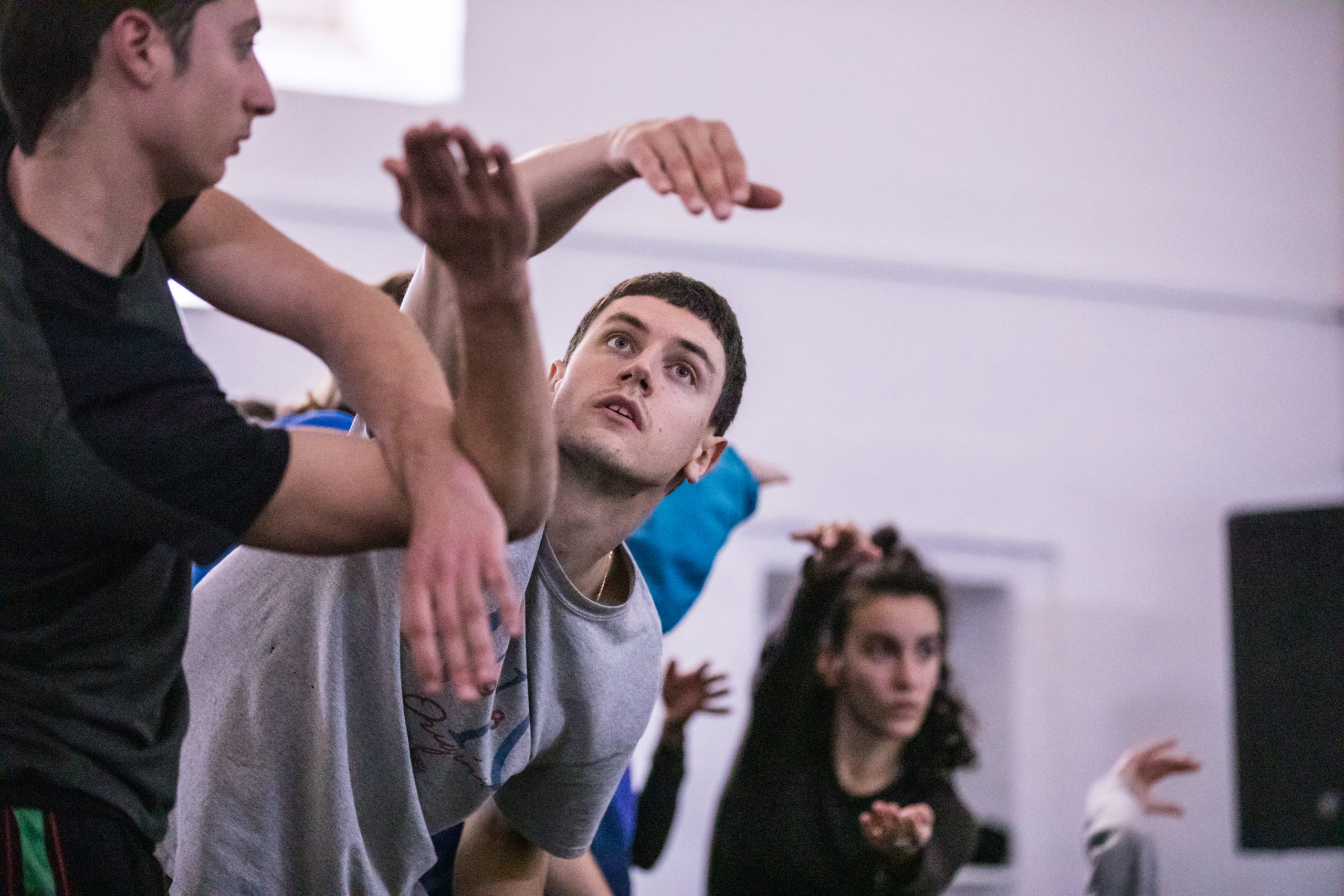
14 Feb Remixing Aringa Rossa: Real Games, False Clues, and Captured Portraits of Society
Ambra Senatore’s full length work ‘Aringa Rossa,’ is intelligently crafted, witty, humorous, and full of surprises. Senatore is in Malta to re-work this piece with a cast of twelve ŻfinMalta dancers, integrating their twelve different personalities with play, rules, and red herrings galore. Aringa Rossa has been described as an ‘ever more astonishing puzzle,’ and our audiences will soon see why…
We caught up with Ambra to find out the true purpose of the work she creates, and how dance can be used as a tool in society to share our own human experiences.

Tell us about yourself
My name is Ambra Senatore. I’m Italian, and a choreographer. I am currently leading a choreographic Centre [Centre Chorégraphique National de Nantes] in France, in a beautiful town close to the ocean. There are 19 centres like this across France, directed by different choreographers. Apart from choreographing our own work, we also help other choreographers with residencies, and money to support their projects. We also visit different territories with different people, perhaps that are not dancers: young people, old people, people that may come from difficult backgrounds…and dance can give them confidence. For me, the work on stage with the dancers, versus the work going out to interact with very different people, are not on a different level; they simply go together as one. I love doing that.

I’m very happy to be in Malta with these dancers to re-work a choreography which was originally made in 2013/14 with eight other wonderful dancers. I am re-working their material, what we created together, but with new beautiful people.
How did this collaboration come about?
One day, one of my very dear dancers messaged me to say that the Director of The National Dance Company of Malta was trying to get my number, and asked if she could give it to him. Apparently Paolo [Mangiola] had seen and liked my pieces, and one dancer had even told him that he wanted to perform Aringa Rossa as they really loved the work. He eventually got my number, which was apparently very difficult …probably because nobody knows me! He got in touch to explain what the company was doing, and both of us were very willing to do a new creation, but I unfortunately didn’t have enough time. We finally decided on re-working an existing piece of repertoire -Aringa Rossa- but working in these new personalities of the twelve ŻfinMalta dancers.
I wanted to recreate that complicity that children have when they are playing.

How is Aringa Rossa similar or dissimilar to your main body of choreographic work? What are some of the themes inside the work?
The piece we are working on is Aringa Rossa, which means ‘Red Herring.’ The title was given my me, but a few months before starting this creation, I was working with a journalist. She told me ‘in your work you give indications to understand what will follow, but sometimes your indications are red herrings – it means fake indications, leading you down a fake path. In my works, there is always a large focus on composition, and in the dance you have elements of everyday life, which arrive, happen, and disappear. You don’t understand the meaning of them- and you shouldn’t as a spectator! They gradually take up more and more space as the piece goes on. I like to make scenes of everyday life, but these scenes are dis-assembled…this is also the way that we composed Aringa Rossa. Maybe by the end of the piece you will understand…but for that you need to come and see it!
When I watched the dancers playing, I realised that these games provided occasions where we could offer some paintings, or portraits of society
The eight original dancers from the creation of Aringa Rossa really put themselves into the work, so I like to say that it is ‘our work.’ Starting in 2009 when I first set out to create group pieces, we began by using games, like children, with rules. I wanted to recreate that complicity that children have when they are playing. As adults we carry out necessary actions in our everyday lives, for the purpose of practicality, for example, we reach out our hand to drink-it’s a necessary action, however in dance, no movement is ever necessary. We played because children have this sense of authenticity and complicity – every action is necessary, and the rules and consequences are so real for them.
Dance is an occasion to share, and to be with others. Dance allows you to know better yourself, and to know better others, through listening and making things together. It allows you to co-operate

When I watched the dancers playing, I realised that these games provided occasions where we could offer some paintings, or portraits of society. We did not use games for actual material in the piece, but more the way we moved and the motivations behind it. It took me years to get to have a group of nine dancers, or my own ‘little society,’ which I then wanted to use to create a work entirely made of material from these games. We had already played so much….that we were sick of playing! But this research provided the ‘motor’ for the work. We did not use games for actual material in the piece, but more the way we moved, and the motivations behind it. I believe we succeeded in capturing these portraits of society and human behaviour.
What does dance mean to you?
For me, dance is an occasion to share, and to be with others. Dance allows you to better know yourself, and to better know others, through listening and making together.
Don’t miss the brilliant ‘Aringa Rossa .10,’ which makes up half of our ŻfinDays Double Bill! Juxtaposed with Mauro Bigozetti’s very Mediterranean ‘Cantata,’ ŻfinDays 2024 will be an unmissable performance.
